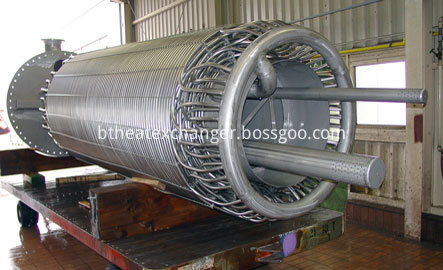The cyclone fine sieve is a new type of fine particle screening and grading equipment successfully developed by the Beijing Research Institute of Mining and Metallurgy. It combines the centrifugal grading of the hydrocyclone and the working principle of the fine sieving of the curved sieve. It has two classification functions and can obtain three kinds of products. The schematic diagram of the swirling fine screen is shown in Figure 1. It consists of a ore body, a cylinder, a cylindrical screen, a cone, a submerged tube and an overflow tube. In fact, it is a combination of both hydrocyclones and solitary screens. The shape is similar to that of a hydrocyclone, and one more screen can be adjusted. B test indicators Figure 3 shows the effect of the mesh on the fractional particle size. When the particle size is the same, the sieve size is different under different sieves, and the overflow and grit size are almost unchanged. Figure 4 shows the effect of the ore ratio and the angle ratio on the classification efficiency. As can be seen, the angle ratio (the ratio of the grit diameter to the diameter of the overflow pipe) increases as the concentration of the ore increases, while the classification efficiency decreases slightly. [next] Where Q is the processing capacity (m 3 /h); e Comparison of classification efficiency Ñ„150mm cyclone fine screen instead of Ñ„250mm hydrocyclone is used in the production system. The comparison of the classification efficiency of the two is shown in Figure 6. As can be seen from the figure, the classification efficiency of the former is 18% higher than the latter, and the fluctuation range is only 30% of the latter.
The Coiled Tube Heat Exchanger ia also called Water Bath Vaporizer, or tube&shell heat exchnager whose main parts are coiled Tube bundles , Shell side. Upon heating methods, water bath vaporizers mainly are divided into Electric Heated Water Bath Vaporizers, Steam heated water bath vaporizers, Circulating Water Bath Vaporizers. A or multiple stainless steel tube bundles are submerged in a bath of hot water.The heat into the bath is controlled to maintain a steady bath temperature. Water Bath Vaporizers can be used to vaporize various cryogens and liquefied gases such as: nitrogen, oxygen, argon, carbon dioxide, LNG etc.
Coiled Tube Heat Exchanger Water Bath Vaporizer, Coiled Tube Heat Exchanger, Shell&Tube Heat Exchanger Wuxi Better Technology Co., Ltd , https://www.btheatexchanger.com
A structure, principle 
The slurry is fed into the ore body at a certain pressure (30-80KPa), and the suspended particles are subjected to three components of tangential, radial and axial directions. From the radial velocity component, the ore particles are subjected to a centrifugal force greater than the centripetal force. It tends to the cylindrical sieve, otherwise it tends to the center; at the same time, the ore is subject to tangential and axial forces. Therefore, in the swirling fine screen, in addition to the outer swirling flow (also referred to as the first swirling flow) from the top to the bottom and the inner swirling flow (also referred to as the second swirling flow) from the bottom to the top, there is also an external rotation. The flow (near the inner surface of the cylinder screen) is subjected to the "cutting" effect of the edge of the small sieve hole, and the cut slurry is the sieve product, which is due to the discharge of the sieve product. Adjust the position of the zero envelope surface.
Figure 2 is a schematic diagram of the working principle. Since the fine swirling sieve sifts some fine-grained materials in the external swirling flow, the fine-grain content of the grit is reduced. In addition, by controlling the amount of undersize, the position of the zero envelope surface can be changed, and the quality of the overflow product may also be improved.  [next]
[next]
Fluorite coarse concentrate (Y), tin ore (G, X), scaly graphite ore (N), tungsten ore (D), iron concentrate (T) sandstone powder were separately tested in a Ñ„150mm swirling fine sieve ( H) and other materials have been explored and all have achieved good indicators.
It is worth mentioning that since the iron concentrate sample has only made some preliminary explorations, it has not yet obtained suitable structural parameters, which need to be further explored later; however, the swirling fine sieve has obvious enrichment effect on the iron concentrate screening: When the grade of iron ore is 60.40%, the iron grade of the sieve is 66.75%, the grade of overflow iron is 55.35%, and the grade of grit iron is 60.35%.
a Effect of mesh on graded particle size 
An empirical formula for sieve pore size and graded particle size is S=2.2d-2d 2 (1)
Where S - mesh size (mm) (when S ≤ 0.6mm)
d - graded granularity (mm).
Of course, the hierarchical granularity is also affected by some of the other parameter choices.
b Effect of ore concentration and pyramidal cone grading efficiency 
c Processing capacity calculation
Based on experimental research and application practices, the following calculation formulas are obtained: 
K - coefficient, 0.56 ~ 0.82;
D F - equivalent diameter of the feed port (cm);
D 0/F ——overflow pipe diameter (cm);
D U/S - diameter of the undersize tube (cm);
H - mine pressure (100KPa).
d Distribution curve Figure 5 shows the distribution curves for several samples. 
